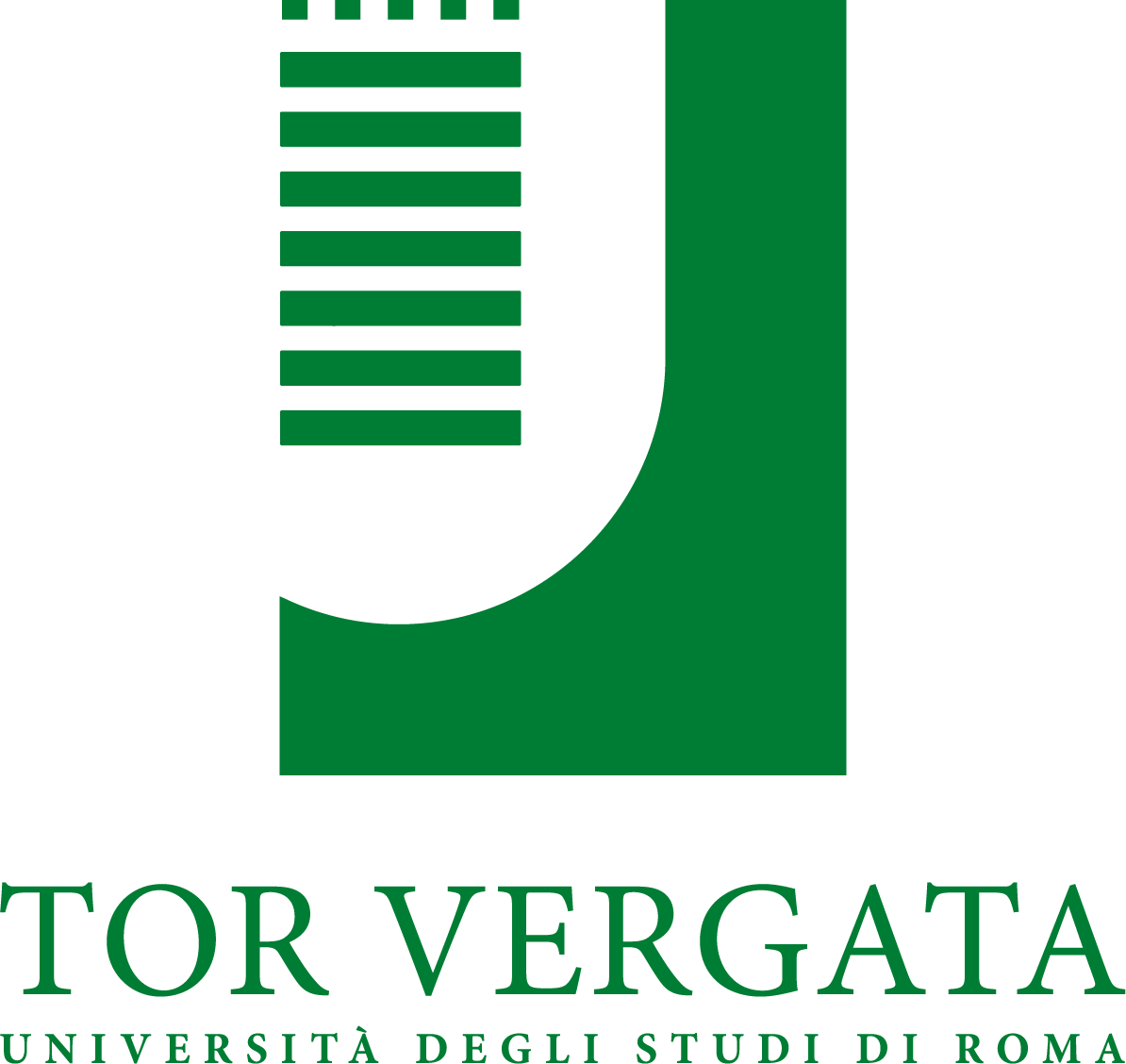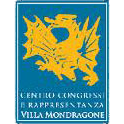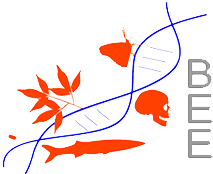MOLECULAR ANTHROPOLOGY
STAFF AND COLLABORATIONS
Olga Rickards (Professor)
Cristina Martinez-Labarga (Research Associate)
Giuseppina Scano (Research Associate)
Irene Contini (Laboratory technician)
Flavio de Angelis (Laboratory technician)
Gabriele Scorrano
Giusy Primativo
Tullia di Corcia
Sara Varano
PROJECTS
Tracing human migrations
One of the major topics in Anthropology is to establish time and mode of evolution of human populations and to clarify some aspects of interest in their population history, their origin and their relationship with respect to each other. Several disciplines, in both historical and biological sciences, have investigated the past of our species addressing specific questions such as migration routes out of the African cradle towards the other continents.
During the last decades Molecular Anthropology has developed a wide range of approaches and methodologies in order to find suitable answers to these questions. Among the various molecules which could be used in unravelling human evolutionary history, mtDNA has been the molecule of choice because of its simple organization, maternal inheritance and relatively fast rate of evolution. The uniparental and clonal nature of mtDNA guarantees a direct transmission from mother to children without any shuffling of genes. Therefore, the variation between individuals is assumed to be the result of the mutations accumulated in maternal lineages, correlating to the different continents, starting from divergence from a common ancestor. For these reasons, mtDNA has proved to be useful in studying recent human evolution and in analyzing genetic affinities of populations from different geographical regions so as to delineate major expansions, dispersals and migrations of our species.
The aim of our research has focused on the phylogeographic analysis of mtDNA control-region and coding-region variations in different populations. In particular, the study of the geographic distribution and diversity of genetic variation has been used to reconstruct human expansion into the Mediterranean Basin, Africa and the Americas. Special attention has been devoted to ethno-linguistic minorities living in Italy, Libyan Tuaregs (Al Awaynat and Tahala, two villages in Fezzan, Libyan Sahara), populations of Egypt, Ethiopia, Libya and Benin, and to autochthonous and mixed groups of Ecuador, Peru and Brasil.
The same populations have been studied for several nuclear DNA markers as well (COL1A2; CYP1A1; Immunoglobulin Enhancer HS1,2), including Y chromosome specific regions which represent the male counterpart to mtDNA studies. These projects have been carried out in collaboration with several Italian and International research groups.
Huntingtin Gene and Its CAG Repeats Number in Primates
The Hdh gene arose with no CAG (cytosine-adenine-guanine) repeats in Dictyostelium discoideumaround 800 million years ago, before the protostome-deuterostome divergence. The CAG then appeared in, and is unique to, the deuterostome branch. Two CAGs are found in Hdh in sea urchin (Strongylocentrotus purpuratus) , the first species to carry a primitive nervous system, and two CAGs are present in amphioxus (Branchiostoma floridae) , the first species to exhibit a rudimental hollow nerve tube and cephalization. Four CAGs are found in Hdh from the more evolved fishes, amphibians and birds. The CAG further expands in mammals and reaches its maximum length in humans. In Homo sapiens the Hdh gene is located in the short arm of chromosome 4 and is characterized by a CAG sequence repeated 9–35 times. Normal subjects have revealed an increase in grey matter with increasing length of the CAG repeat, indicating that CAG size can influence normal brain structure. However, CAG repeats exceeding 35 in number cause Huntington’s disease, a neurodegenerative syndrome that occurs earlier due to a greater number of CAG repeats. Our hypothesis is that the progressive increase in CAG length in the Hdh gene observed during evolution may be implicated in the evolutionary changes that have occurred in developing adult nervous systems throughout vertebrate phylogeny, with a possible role for the CAG in newly emerging cognitive functions in the mammalian brain. We have collected genomic DNA and have begun to amplify the CAG tract from primates (Nycticebus pygmaeus, Eulemur fulvus albifrons, Lemur variegatus, Lemur catta, Sanguinus imperator, Cebus apella, Macaca fuscata, Macaca mulatta, Papio hamadryas, Chlorocebus aethiops, Cercocebus atys, Mandrillus sphinx, Colobus, Hylobates lar, Pongo, Gorilla gorilla, Pan troglodytes) in order to examine the inter- and intraspecific variability.
This research was carried out in collaboration with Elena Cattaneo (Laboratory of Stem Cell Biology and Pharmacology of Neurodegenerative Diseases, Department of Biosciences, University of Milan and INGM, Istituto Nazionale di Genetica Molecolare ”Romeo ed Enrica Invernizzi”)
MOLECULAR ANTHROPOLOGY References:
Pepe, G., Rickards, O., Buè, C., Martinez-Labarga, C., Tartaglia, M., De Stefano, G.F. (1994). EcoRI, RsaI, and MspI RFLPs of the COL1A2 gene (type I collagen) in the Cayapa, a Native American population of Ecuador. Human Biology, vol. 66 (2): 299-322.
Rickards, O., Tartaglia, M., Martìnez-Labarga, C., De Stefano, G.F. (1994). Genetic Characterization of the Cayapa Indians of Ecuador and their genetic relationships to other native american populations. Human Biology, vol. 66 (6): 979-989.
Pepe, G., Rickards, O., Jodice, C., Modiano, G. (1995).Alellele and haplotype frequency distribution of the EcoRI, RsaI, and MspI COL1A2 RFLPs among various human populations. Human Biology, vol. 67 (6): 905-920.
Trachtemberg, E.A., Erlich, H.A., Rickards, O., De Stefano, G.F., Klitz, W. (1995). HLA class II Linkage disequilibrium and haplotype evolution in the Cayapa Indians of Ecuador. American Journal of Human Genetics, vol. 57: 415-424.
Rickards, O., Martinez-Labarga, C., Scano, G., De Stefano, G.F., Biondi, G., Pacacci, M., Walter, H. (1998).Genetic history of the population of Sicily. Human Biology, vol. 70 (4): 699-714.
Pepe, G., Camacho vanegas, O., Rickards, O., Giusti, B., Comeglio, P., Brunelli, T., Marcucci, R., prisco, D., Gensini, G.F., Abbate, R. (1999). World distribution of the T833C/844INS68 CBS in cis double mutation: a reliable anthropological marker. Human Genetics, vol. 104: 126-129.
Rickards, O., Martínez-Labarga, C., Lum, J.K., De Stefano, G.F., Cann, R.L. (1999). Mitochondrial DNA history of the Cayapa Amerinds of Ecuador: detection of additional founding lineages for the native American populations. American Journal of Human Genetics, vol. 65: 519-530.
Martínez-Labarga, C., Rickards, O., Scacchi,R., Corbo R.M., Biondi G., Peña J.A., Varas De Vieira C., Guevara, A.E.B, Mesa Santurino, M.S., De Stefano, G.F. (1999).Genetic Population Structure of two African-American Communities of Esmeraldas (Ecuador). American Journal Physical Anthropology, vol. 109: 159-174.
Scozzari, R., Cruciani, F., Santolamazza, P., Malaspina, P., Torroni, A., Sellitto, D., Arredi, B., Destro-Bisol, G., De Stefano, G.F., Rickards, O., Martínez-Labarga, C., Modiano, D., Biondi, G., Moral, P., Olckers, A., Wallace, D.C., Novelletto, A. (1999). Combined use of biallelic and microsatellite Y-chromosome polymorphisms to infer affinities among African populations. American Journal of Human Genetics, vol. 65: 829-846.
Begovich, A.B., Moonsamy, P.V., Mack, S.J., Barcellos, L.F., Steiner, L.L., Hollenbach, J., Trachtenberg, E., Louie, L., Zimmerman, P., Hill, A.V.S., Stoneking, M., Sasazuki, T., Konenkov, V.I., Sartakova, M.L., Titanji, V.P.K., Rickards, O., Klitz, W. (2001). Genetic variability and linkage disequilibrium within the HLA-DP region: analysis of 15 different populations. Tissue antigens, vol. 57: 424-439.
Rickards, O., Martínez-Labarga, C., Frezza, D., Favaro, M., Mallegni, F. (2001). DNA analyses of the remains of the Prince Branciforte Barresi family. International Journal Legal Medicine, vol. 114: 141-146.
Tarazona-Santos, E., Carvalho-Silva, D.R., Pettener, D., Luiselli, D., De Stefano, G.F., Martínez Labarga, C., Rickards, O., Tyler-Smith, C., Pena, S.D.J., Santos, F.R. (2001). Genetic differentiation in South Amerindians is related with environmental and cultural diversity: evidences from Y chromosome. American Journal of Human Genetics, vol. 68: 1485-1496.
Tarazona-Santos, E., Carvalho-Silva, D.R., Pettener, D., Luiselli, D., De Stefano, G.F., Martínez Labarga, C., Rickards, O., Tyler-Smith, C., Pena, S.D.J., Santos, F.R. (2001). Genetic differentiation in South Amerindians is related with environmental and cultural diversity: evidences from Y chromosome. Reply to Rothhammer and Moraga. American Journal of Human Genetics, vol. 69: 904-906.
Torroni, A., Bandelt, H-J., Macaulay, V., Richards, M., Cruciani, F., rengo, C., Martinez-Cabrera, V., Villems, R., kivisild, T., Metspalu, E., Parik, J., tolk, H-V., Tambets, K., Forster, P., Karger, B., Francalacci, P., Rudan, P., Janicijevic, B., Rickards, O., Savontaus, M-L., Huoponen, K., Laitinen, V., Koivumäki, S., Sykes, B., Hickey, E., novelletto, A., Moral, P., Sellitto, D., Coppa, A., Al-Zaheri, N., Santachiara-Benerecetti, A.S., Semino, O., Scozzari, R. (2001). A signal, from human mtDNA, of postglacial recolonization in Europe. American Journal of Human Genetics, vol. 69: 844-852.
Biondi, G.F., Rickards, O. (2002). The scientific fallacy of the human biological concept of race. The mankind quarterly, vol. XLII (4): 355-388.
Ciminelli, B.M., Pompei, F., Relucenti, M., Koji Lum, J., Simpore, J., Spedini, G., Martínez Labarga, C., Pardo, M. (2002). Confirmation of the potential usefulness of two beta globin pseudogene markers to estimate gene flows to and from Sub-Saharan Africans. Human Biology, vol. 74: 243-252.
Reidla, M., kivisild, T., Metspalu, E., Kaldma, K., Tambets, K., Tolk, H-V., Parik, J., Loogväli, E-L., Drenko, M., Malyarchuk, B., Bermisheva, M., Zhadanov, S., Pennarun, E., Gubina, M., Golubenko, M., Damba, L., fedorova, S., Gusar, V., Grechanina, E., Mikerezi, I., Moisan, J-P., Chaventré, A., Khusnutdinova, E., osipova, L., Stepanov, V., Voevoda, M., Achilli, A., rengo, C., Rickards, O., De Stefano, G. F., Papiha, S., Beckman, L., Janicijevic B., Rudan, P., Anagnou, N., Michalodimitrakis, E., koziel, S., Usanga, E., Geberhiwot, T., Herrnstadt, C., Howell, N., Torroni, A., Villems, R. (2003). Origin and diffusion of mtDNA haplogroup X. America Journal of Human Genetics, vol. 73: 1178-1190.
Scacchi, R., Corbo., R. M., Rickards, O., De Stefano, G.F. (2003). Data on the World Distribution of Paraoxonase (PON1 Gln 192?Arg) Gene Frequencies. Human Biology, vol.75 (3): 365-373.
Corbo, RM., Ulizzi, L., Scacchi, R., Martínez-Labarga, C., De Stefano, GF. (2004). Apolipoprotein E polymorphism and fertility: a study in pre-industrial populations. Molecular Human Reproduction, vol. 10 (8): 617-620.
Frezza, D., Giambra, V., Cianci, R., Fruscalzo, A., Giufré, M., Cammarota, G., Martínez-Labarga, C., Rickards, O., Scibilia, G., Sferlazzas, C., Bartolozzi, F., Starnino, S., Magazzù, G., Gasbarrini, G.B., Pandolfi, F. (2004).Increased frequency of the Immunoglobulin Enhancer HS1,2 Allele 2 in Coeliac disease. Scandinavian Journal of Gastroenterology, vol. 39: 1083-1087.
Tambets, K., Rootsi, S., Kivisild, T., Help, H., Serk, P., Loogväli, E-L., Tolk, H-V., Reidla, M., Metspalu, E., Pliss, L., Balanovsky, O., Pshenichnov, A., Balanovska E., Gubina, M., Zhadanov, S., Osipova, L., Damba, L., Voevoda, M., Kutuev, I., bermisheva, M., Khusnutdinova, E., Gusar, V., grechanina, E., parik, J., Pennarun, E., Richard, C., Chaventre, A., Moisan, J-P., Baràc, L., Pericic, M., Rudan, P., Terzic, R., Mikerezi, I., Krumina, A., Baumanis, V., Koziel, S., Rickards, O., De Stefano, G.F., Anagnou, N., Pappa, K.I., Michalodimitrakis, E., Feràk, V., Füredi, S., Komel, R., Beckman, L., villems, R. (2004). The wetern and eastern roots of the Saami-the history of genetic “outliers” told by mitochondrial DNA and Y-Chromosomes. America Journal of Human Genetics, vol. 74: 661-682.
Giambra, V., Fruscalzo, A., Giufré, M., Martínez-Labarga, C., Favaro, M., Rocchi, M., Frezza, D. (2005). Evolution of human IgH3′EC duplicated structures: both enhancers HS1, 2 are polymorphic with variation of transcription factor’s consensus sites. Gene, vol. 346: 105-114.
Rickards, O., Martínez-Labarga, C., Trucchi, E., Renzi, F., Casalotti, R., Babalini, C., Biondi, G., Pepe. G., De Stefano, G.F. (2005). Restriction fragment length polymorphisms of the type I collagen locus 2 (COL1A2) in two communities of African ancestry and other mixed populations of northwestern Ecuador. Human Biology, vol. 77: 115-123.
Babalini, C., Tarsi, T., Martínez-Labarga, C., Scano, G., Pepe, G., De Stefano, GF., Rickards, O., (2005). COL1A2 (Type 1 Collagen) polymorphism in the Colorado Indians of Ecuador. Biology, vol. 32: 666-678.
Babalini, C., Martínez-Labarga, C., Tolk, H.V., Kivisild, T., Giampaolo, R., Tarsi, T., Contini, I., Barac, L., Janicijevic, B., Martinovic Klaric, I., Pericic, M., Sujoldžic, A., Villems, R., Biondi, G., Rudan, P., Rickards, O. (2005). The genetic history of the Croatian linguistic minority of Molise (southern Italy): a maternal view. European Journal of Human Genetics, vol. 13: 902-912.
Luciani, S., Fornaciari, G., Rickards, O., Martínez Labarga, C., Rollo, F. (2006). Molecular characterization of a pre-Columbian mummy and in situ coprolite. American Journal Physical Anthropology, vol. 129: 620-629.
Giambra, V., Martínez-Labarga, C., Giufre’, M., Modiano, D. , Simpore’, J. , Gisladottir, B. K., Francavilla, R., Zhelezova, G., Kilic, S.S., Crawford, M., Biondi, G., Rickards, O., Frezza, D. (2006). Enhancer HS1,2 polymorphism: a new powerful anthropogenetic marker. Annals of Human Genetics, vol. 70: 1-5.
Treiber, M., Schulz, H-U., Landt, O., Drenth, J.P.H., castellani, C., Real, F.X., Akar, N., Ammann, R.W., Bargetzi, M., Bhatia, E., Demaine, A.G., Battagia, C., Kingsnorth, A., O’Reilly, D., Truninger, K., Koudova, M., Spicak, J., Cerny, M., Menzel, H-J., Moral, P., Pignatti, P.F., Romanelli, M.G., Rickards, O., De Stefano, G.F., Zarnescu, N.O., Choudhuri, G., Sikora, S.S., Jansen, J.B.M.J., weiss, F.U., Pietschmann, M., Teich, N., Gress, T.M., Ocjenga, J., Schmidt, H., Kage, A., Halangk, J., Rosendahl J., Groneberg, D.A., Nickel, R., Witt, H. (2006). Keratin 8 sequence variants in patients with pancreatitis and pancreatic cancer. Journal of Molecular Medicine, vol. 84: 1015-1022.
Witt, H., Sahin-Tòth, M., Landt, O., Chen, J-M., Kähne, T., Drenth, J.PH., Kukor, Z., Szepessy, E., Halangk, W., Dahm, S., Rohde, K., Schulz, H-U., Le Marèchal, C., Akar, N., Ammann, R.W., Truninger, K., Bargetzi, M., Bhatia, E., Castellani, C., Cavestro, G.M., Cerny, M., Destro-Bisol, G., Spedini, G., Eiberg., H., Jansen, J.B.M.J., Koudova, M., Rausova, E., Macek Jr, M., Malats, N., Real, F.X., Menzel, H-J., Moral, P., Galavotti, R., Pignatti, P.F., Rickards, O., Spicak, J., Zarnescu, N.O., Böck, W., Gress, T.M., Friess, H., Ockenga, J., Schmidt, H., Pfützer, R., Löhr, M., Simon, P., Weiss, F.U., Lerch, M.M., Teich, N., Keim, V., Berg., T., Wiedenmann, B., Luck, W., Gronenberg, D.A., Becker, M., Keil, T., Kage, A., Bernardova, J., Braun, M., Güldner, C., Halangk, J., rosendahl, J., Witt, U., Treiber, M., Nickel., R., Férec, C. (2006). A degradation-sensitive anionic trypsinogen (PRSS2) variant protects against chronic pancreatititis. Nature genetics, vol. doi:10.1038/ng1797.
Corbo, R.M., Ulizzi, L., Piombo, L., Martínez-Labarga, C., De Stefano, G.F., Scacchi, R. (2007). Estrogen receptor alpha polymorphisms and fertility in populations with different reproductive patterns. Molecular Human Reproduction, vol. 13: 537-540.
Scacchi, R., Pinto, A., Rickards, O., Pacella, A., De Stefano, G.F., Cannella, C., Corbo, R.M. (2007). An analysis of peroxisome proliferactor-activated receptor gamma (PPAR-?2) Pro12Ala polymorphism distribution and prevalence of type 2 diabetes mellitus (T2DM) in world populations in relation to dietary habits. Nutrition, Metabolism and Cardiovascular Diseases, vol. 17: 632.641.
Tamm, E., Kivisild, T., Reidla, M., Metspalu, M., Glenn Smith, D., Mulligan, C.J., Bravi, C.M., Rickards, O., Martinez-Labarga, C., Khusnutdinova, E.K., Fedorova, S.A., Golubenko, M.V., Stepanov, V.A., Gubina, M.A., Zhadanov, S.I., Ossipova, L.P., Damba, L., Voevoda, M.I., Dipierri, J.E., Villems, R., Malhi, R.S. (2007).Beringian Standstill and Spread of Native American Founders. Plos ONE 2(9): e829. doi:10.1371/journal.pone.0000829.
Vyletal, P., sokolovà, J., Cooper, D.N., Kraus, J.P., Krawczak, M., Pepe, G., Rickards, O.,Koch, H.G., Linnebank, M., Kluijtmans, L.A.J., Blom, H.J., Boers, G.H.J., Gaustadnes, M., skovby, F., Wilcken, B., Wilcken, D.E.L., Andria, G., Sebastio,G., Naughten, E.R., Yap., S., Ohura, T., Pronicka, E., Laszlo, A., Kožich, V. (2007).Diversity of cystathionine ß-synthase haplotypes bearing the most common homocystinuria mutation c.833T>C: a possible role for gene conversion. Human Mutation, vol. 28 (3): 255-264.
Giardina, E., Pietrangeli, I., Martínez-Labarga, C., Martone, C., de Angelis, F., Spinella, A., De Stefano, G., Rickards, O., Novelli, G. (2008). Haplotypes in SLC24A5 Gene as ancestry informative markers in different populations. Current Genomics vol. 9: 110-114.
Luca, F., Bubba, G., Basile, M., Brdicka, R., Michalodimitrakis, E., Rickards, O., Vershubsky, G., Quintana-Murci, L., Kozlov, A.I., Novelletto, A. (2008).Multiple advantageous amino acid variants in the nat2 gene in human populations. Plos One, vol. 3 (9): e3136.
Millar, D.S., Lewis, M.D., Horan, M., Newsway, V., Rees, D.A., Easte, T.E., Pepe, G., Rickards, O., Norin, M., Scanlon, M.F., Krawczak, M., Cooper, D.N. (2008).Growth hormone (GH1) gene variation and the growth hormone receptor (GHR) exon 3 deletion polymorphism in aWest-African population. Molecular and Cellular Endocrinology, vol. 296: 18-25.
Wolf, A., Millar, D.S., Caliebe, A., Horan, M., Newsway, V., Kumpf, D., Steinmann, K., Chee, I-S., Lee, Y-H., Mutirangura, A., Pepe, G., Rickards, O., Schmidtke, J., Schempp, W., Chuzhanova, N., Kehrer-Sawatzi, H., Krawczak, M., Cooper, D.N. (2008). A gene conversion hotspot in the human growth hormone (GH1) gene promoter. Human Mutation, vol. 0: 1-9.
Rònai, Z., Witt, H., Rickards, O., Destro-Bisol, G., Bradbury, A.R.M., Sahin-Tòth, M. (2009). A common African polymorphism abolishes tyrosine sulfation of human anionic trypsinogen (PRSS2). Biochemica journal, vol. 418 (1): 155-161.
Ottoni C, Martínez-Labarga C, Loogväli EL, Pennarun E, Achilli A, De Angelis F, Trucchi E, Contini I, Biondi G, Rickards O. (2009) First genetic insight into Libyan Tuaregs: a maternal perspective. Annals of Human Genetics 73: 438-48.
Ottoni, C., Martínez-Labarga, C., Vitelli, L., Scano, G., Fabrini, E., Contini, I., Biondi, G., Rickards, O. (2009) Human mitochondrial DNA variability in Southern Italy. Annals of Human Biology 36(6): 1-27
Messina, F., Scorrano, G., Martínez Labarga, C., Rolfo, M.F., Rickards, O. (2010) Mitochondrial DNA variation in an isolated area of Central Italy. Annals of Human Biology 37(3):385-402.
Ottoni C, Primativo, G., Hooshiar Kashani, B., Achilli A., Martínez-Labarga C, Biondi, G., Torroni, A., Rickards O. (2010) Mitochondrial Haplogroup H1 in North Africa: An Early Holocene Arrival from Iberia. PLoS ONE 5(10): e13378. doi:10.1371/journal.pone.0013378.
Predazzi, I.M., Martínez-Labarga, C., Secchione, L., Mango, R., Ciccacci, C., Amati, F., Ottoni, C., Crawford, M.H., Rickards, O., Romeo, F., Novelli, G. (2010).Population differences in allele frequencies at the OLR1 locus may suggest geographic disparities in cardiovascular risk events. Annals of Human Biology, vol. 37 (2): 137-149.
Piacentini, S., Polimanti, R., Porreca, F., Martinez-Labarga, C., De Stefano, G.F., Fuciarelli, M. (2011).GSTT1 and GSTM1 Gene Polymorphisms in European and African Populations. Molecular Biology Reports vol. 38 (2):1225-1230.
Ottoni, C., Larmuseau, M.H.D., Vanderheyden, M., Martinez-Labarga, C., Primativo, G., Biondi, G., Decorte, R., Rickards, O. (2011) Deep Into the Roots of the Libyan Tuareg: A Genetic Survey of Their Paternal Heritage. American Journal Physical Anthropology, vol145(1):118-24. doi: 10.1002/ajpa.21473.
Martínez-González, L.J., Saiz M., Alvarez-Cubero M.J., Gómez-Martín, A., Alvarez J.C., Martínez-Labarga, C., Lorente J.A. (2012) Distribution of Y chromosomal STRs loci in Mayan and Mestizo populations from Guatemala. Forensic Science International GENETICS, vol. 6: 136-142, ISSN: 1872-4973, doi: 10.1016/j.fsigen.2011.04.003
Martínez-González, .L.J., Martínez-Espín, E., Alvarez, J.C., Albardaner, F., Rickards O, Martínez-Labarga, C., Calafell, F., Lorente, J.A.(2012) Surname and Y chromosome in Southern Europe: a case study with Colom/Colombo. European Journal of Human Genetics. vol. 20: 211-216, ISSN: 1018-4813, doi: 10.1038/ejhg.2011.162
Galgani, A., Mancino, G., Martínez-Labarga, C., Cicconi, R., Mattei, M., Amicosante, M., Bonanno, C.T., Di Sano, C., Salem Gimil, G., Salerno, a., Coalizzi, V., Montesano, C. (2013) HLA-A, -B and -DRB1 allele frequencies in Cyrenaica population (Libya) and genetic relationships with other populations. Human Immulogy , vol. 74 (1): 52-59.
Scorrano, G., Lelli R., Martínez-Labarga, C., Scano, G., Contini, I., Hafez, H.S., Rudan, P., Rickards, O. (2015) Variability and distribution of COL1A2 (type I collagen) polymorphisms in the central-eastern Mediterranean Basin. Annals of Human Biology (in press).
Messina, F., Finocchio, A., Rolfo, M. F., De Angelis, F., Rapone, C., Coletta, M., Martínez-Labarga, C., Biondi, G., Berti, A., Rickards O. (2015) Traces of Forgotten Historical Events in Mountain Communities in Central Italy: A Genetic Insight. American Journal of Human Biology 27 (4), pp. 508-519
NATIONAL AND INTERNATIONAL COLLABORATIONS
Mag. Berti, Cap. Rapone. (Carabinieri, Scientific Investigation Department, Rome, Italy )
Elena Cattaneo (Laboratory of Stem Cell Biology and Pharmacology of Neurodegenerative Diseases, Department of Biosciences , University of Milan)
David Comas, (Institut de Biologia Evolutiva (CSIC-UPF), Departament de Ciències Experimentals i de la Salut Universitat Pompeu Fabra, Barcelona, Spain)
Maarten H.D. Larmuseau, (Laboratory of Forensic Genetics & Molecular Archaeology, Katholieke Universiteit Leuven, KU Leuven, Belgium)
Jose A. Lorente, Pfizer – Universidad de Granada – Junta de Andalucía Centre for Genomics and Oncological Research (GENYO), Granada, Spain
Maria Orera Clemente, Circagen, Madrid, Spain
Claudio Ottoni, Laboratory of Forensic Genetics and Molecular Archaeology, Center for Archaeological Sciences, Katholieke Universiteit Leuven, Belgium
Elizabeth A Trachtenberg, Children s Hospital Oakland Research Institute, Oakland, CA 94609, USA





Università di Tor Vergata